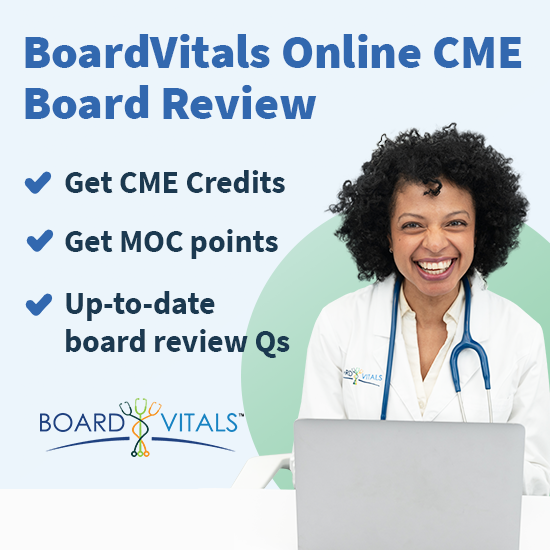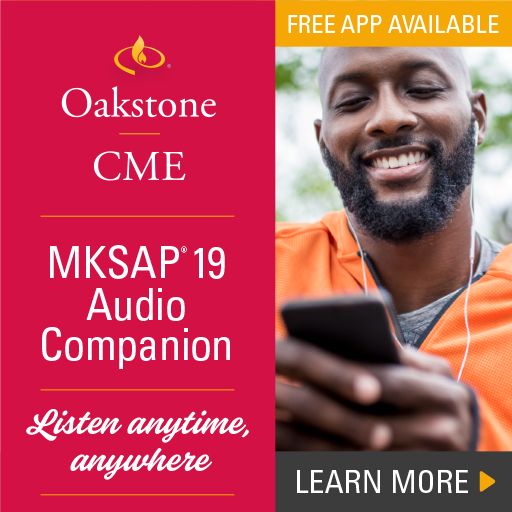
Navigating the world of CME can be confusing. With so many acronyms to memorize, types of CME available, and associations to know, it's easy to be overwhelmed. Don't stress! We've put together a complete CME glossary to help you make sense of CME-related terms.
Accreditation Criteria: The requirements against which CME providers’ compliance is determined in order to achieve or maintain accreditation.
Accredited CME Provider: Organizations that have met the ACCME's regulations and guidelines for their activities to offer CME credits upon completion.
Accredited Council for Continuing Medical Education (ACCME): The governing body responsible for setting and enforcing the standards in continuing medical education (CME) within the United States. The ACCME oversees and accredits organizations and institutions that provide CME activities.
Accreditor: An organization that sets and enforces the standards for CME provider organizations and/or activities through review and approval of organizations/activities, and monitors and enforces guidelines for these organizations/activities.
AMA Core Requirements: The AMA requirements that every activity certified for AMA PRA Category 1 Credit™ must meet.
AMA PRA Category 1 Credits: The most commonly accepted type of CME credits for physicians in order to meet both their state and specialty board requirements. Category 1 CME typically focuses on education for a designated specialty content area.
AMA PRA Category 2 Credits: CME credits awarded for activities not certified for AMA PRA Category 1 Credits. These credits must be self-claimed and self-documented, and unlike category 1 CME credits, organizations may not advertise an activity as meeting requirements or being eligible for AMA PRA Category 2 Credit™.
AMA PRA CME Credit System: Demonstrates a physician has participated in continuing medical education (CME) activities that meet the requirements of state medical boards, medical specialty societies, specialty boards, hospital medical staffs, the Joint Commission, insurance groups, and other.
American Board of Medical Specialties (ABMS): The largest physician-led specialty certification organization in the United States. Represents 24 broad areas of specialty medicine and determines how many CME credits physicians must earn in their specialty to maintain their specialty board certification.
American Medical Association (AMA): The largest association and lobby group of physicians and medical students in the United States. The organization regulates physician CMEs and ensures physicians "have participated in educational activities and obtained CME credit to document meeting the requirements of state medical boards, medical specialty societies, specialty boards, hospital medical staffs, the Joint Commission, insurance groups, and others.”
American Osteopathic Association (AOA): The representative member organization for the more than 145,000 osteopathic medical doctors and osteopathic medical students in the United States. Determines how many CME credits Ostepath physicians must earn to maintain their AOA board certification.
AOA Category 1-A Credit: Credits that can be earned by Osteopathic physicians by participating in formal educational programs designed to enhance clinical competence and improve patient care. Considered "formal Osteopathic CME".
AOA Category 1-B Credit: Osteopathic CME credits earned via publications, inspections, examinations, committees, teaching, journal reading, test construction, or job task analysis.
AOA Category 2-A Credit: Osteopathic CME credits that include formal educational programs sponsored by an ACCME-accredited provider for AMA PRA Category 1 Credits, approved by the AAFP, approved by an internationally known sponsor acceptable to the Council on CME, or an AOA-accredited Category 1 CME sponsor that does not meet the faculty/hours requirement for Category 1-A Credit.
AOA Category 2-B Credit: Osteopathic CME credits that can be earned via home study, journal reading, textbook reading, non-interactive CME on the internet, ABMS MOC and subspecialty exams, and scientific exhibits.
Audio CME: CME activities that allow clinicians to earn CME credits via auditory methods on their commute, while multi-tasking, etc. Popular audio CME providers include Audio Digest and Oakstone.
Board Review Questions and Cases: CME activities that allow clinicians to earn CME credits by reviewing and answering board quality questions and cases. Popular board review CME providers include BoardVitals and Oakstone.
CME Activity: An educational offering that is planned, implemented, and evaluated in accordance with the ACCME Accreditation Criteria, Standards for Commercial Support, and policies.
CME Allowance: A fixed dollar amount given annually to clinicians by their organization or employer to complete their CME requirements and maintain their knowledge and skills. Also referred to as CME stipend, CME budget, and CME money.
CME Conference: Live CME activities that are often hosted in popular vacation destinations and feature renowned speakers and immersive sessions that clinicians can attend to earn CME credits.
CME Credits: Units clinicians must earn to meet their state and medical board licensing and certification requirements.
CME Deadline: The deadline clinicians must complete thier CME requirements or use their CME allowance by. Typically occurs at the end of June or December.
CME Requirements: Requirements set by state and medical licensing boards that determine how many CME credits a clinician must earn to maintain their state medical license and specialty board certification.
CME Tracker: Online CME tracking systems that track how many CME credits have been earned, when the credits were earned, the type of credits earned, and more. Often used to help clinicians report their CME credits to necessary medical boards.
Continuing Education Units (CEUs): The equivalent of 10 contact hours/CME credits for nurse practitioners meeting their CE requirements.
Continuing Medical Education (CME): Educational activities which serve to maintain, develop, or increase the knowledge increase the knowledge, skills, and professional performance and relationships that a physician uses to provide services for patients, the public, or the profession.
Electronic Device Promotions: CME Bundles that offer a complimentary electronic device such as an Apple iPad with purchase. Popular providers that offer a bonus electronic device with CME purchase includes American Medical Seminars and GIBLIB.
Enduring Materials: Non-live CME activities that lasts over time. Includes print, audiovisual, and internet materials such as podcasts, CD-Roms, DVDs, archived webinars, and question banks.
European Union of Medical Specialties (UEMS): The oldest medical organization in Europe that represents medical specialists in the European Union. Sets CME requirements for physicians in the European Union and has agreement with the AMA that states the AMA will convert credit for live and e-learning activities certified by the European Accreditation Council for Continuing Medical Education (EACCME), the accrediting arm of the UEMS, to AMA PRA Category 1 Credit™.
Fee-Based CME: CME activities that are not sponsored and by corporate organizations and the pharmaceutical industry. Fees incurred by CME providers can vary drastically dependent on the fee-based activity.
Hours of Instruction: The total hours of educational instruction in a CME activity.
Industry-Sponsored CME: CME activities that have been sponsored and funded by corporate organizations, often by Big Pharma.
Internet Searching and Learning: Type of CME activity that involves engaging in online learning on topics relevant to clinical practice. Classified as self-directed learning and requires clinicians to document a clinical question, the sources used, and the application to one's practice.
Jointly Provided Activity: An activity that is planned, implemented, and evaluated by an accredited provider and one or more non-accredited entities.
Journal CME: Peer reviewed articles that have been planned as a learning activity and certified for credit by an accredited CME provider before publication.
Live CME Activity: In person CME activities clinicians can attend to earn CME credits. Requires attendance at a specific date, time, and place. Includes CME conferences, workshops, seminars, journal clubs, simulation labs, and virtual webinars.
Maintenance of Certification (MOC): A 4-step process where physicians participate in continuing learning and education activities to maintain their specialty board certification.
MOC Exam: Part of the Maintenance of Certification process that requires physicians to pass an exam periodically to maintain their board certification. Typically must be passed every 10 years.
MOC Points: Units physicians must earn to maintain their medical board certification.
Performance Improvement CME: A 3-stage process by which evidence-based performance measures and quality improvement (QI) interventions are used to help physicians identify patient care areas for improvement and change their performance.
Regularly Scheduled Series (RSS): CME courses that have multiple sessions occurring on an ongoing basis. Includes grand rounds, tumor boards, and morbidity and mortality conferences.
State CME Requirements: Requirements set by state licensing board that determine how many CME credits a clinicians must earn and by when to maintain their state medical license.
Test Item Writing: CME earned by being involved in writing test questions for national board examinations.
Video CME: CME activities that allow clinicians to earn CME credits by watching videos online. Often accompanied by questions related to the video content. Popular video CME providers include Oakstone and GIBLIB.
Virtual CME Conference: CME conferences that occur at a specific time and place but are attended virtually instead of in-person. Like in person conferences, typically includes renowned speakers and interactive sessions.
We hope our CME glossary has helped explain some of the more confusing CME-related terms. Still have questions? Let us know in the comments below!







